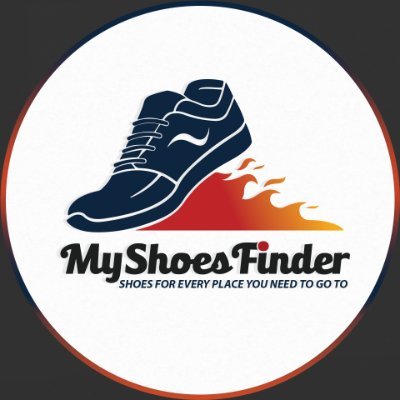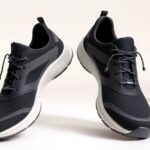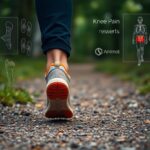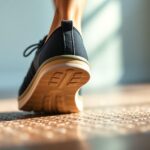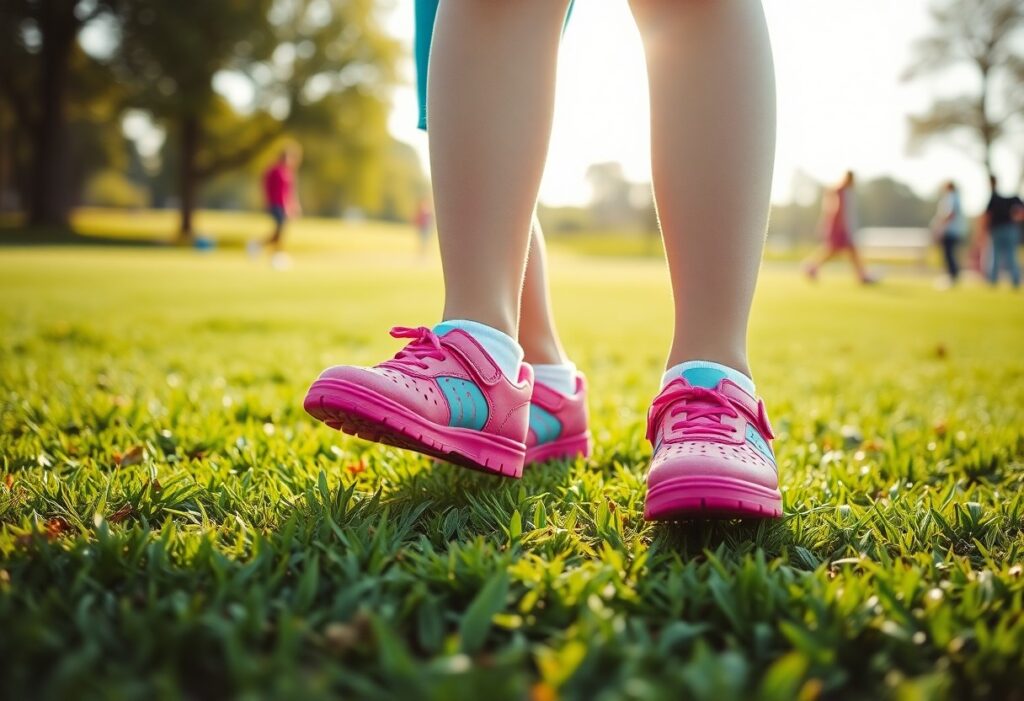
Many parents are keen to explore effective methods for naturally facilitating their child’s foot development. Consider children’s feet as growing plants; they require ample space and freedom to thrive in their natural environment. Xero Shoes, designed with zero-drop soles and constructed from flexible materials, encourage natural toe splay and enhance arch strength. Research indicates that these shoes can contribute to an impressive 12% enhancement in arch development by age 7. The collection features styles like Tiny Kicks for toddlers and Lena for school-aged children, guaranteeing they adapt to growing feet while ensuring comfort. Regular measurement of your child’s feet is essential, and it's advisable to avoid hand-me-downs to prevent improper wear patterns. Your child’s feet deserve the finest start in life.
Discovering the Essential Benefits of Barefoot Shoes for Child Development
An increasing number of parents are recognising the significant advantages of barefoot shoes for their children, as they understand the vital role these shoes play in promoting natural foot development. These shoes replicate the sensation of walking barefoot while providing necessary protection from harsh surfaces. Visualise children’s feet as growing plants; they require space and freedom to develop in a healthy manner. With features such as zero-drop soles and wide toe boxes, barefoot shoes encourage correct alignment and muscle strength, making them a preferred choice among parents focused on developmental podiatry in 2025.
Defining Barefoot Shoes: Key Features and Advantages
Barefoot shoes represent an ideal balance between traditional footwear and the experience of going completely barefoot. These innovative shoes are crafted with thin, flexible soles, zero-drop construction, and wide toe boxes, allowing for unrestricted foot movement. Unlike conventional shoes, they do not hinder toe splay or arch development, ensuring that your child’s feet can grow in harmony with nature. Designed to provide protection, these shoes also enhance sensory feedback and support proper biomechanics, which significantly contributes to your child's overall foot health.
Uncovering the Developmental Benefits of Barefoot Footwear
Barefoot shoes offer a multitude of benefits for your child’s foot development. They not only strengthen arches and improve balance but also enhance proprioception, a critical element for coordination. Research from the University of Oxford has shown that children who wear minimalist shoes develop 12% stronger arches by the time they reach age 7. Additionally, the natural toe splay encouraged by these shoes increases by 7% each year, further facilitating healthy foot growth. Moreover, barefoot shoes help prevent common issues such as flat feet and toe deformities by allowing your child’s feet to move freely, thereby reducing the risk of restricted growth patterns.
It is noteworthy that a significant 91% of pediatricians advocate for the use of flexible footwear, highlighting the reliability of barefoot shoes in promoting natural development. These shoes are a dependable option for parents who prioritise their children’s foot health.
Comparing Traditional Shoes with Barefoot Alternatives
When selecting the ideal footwear for your child, understanding the differences between traditional and barefoot shoes is crucial. Here’s an in-depth comparison:
Traditional Shoes vs. Barefoot Shoes
| Traditional Shoes | Barefoot Shoes |
| Thick, rigid soles | Thin, flexible soles |
| Narrow toe boxes | Wide toe boxes |
| Elevated heels | Zero-drop design |
| Restricts natural movement | Encourages natural movement |
Furthermore, traditional shoes may lead to restricted toe splay and weakened arches, whereas barefoot shoes foster stronger foot muscles and proper alignment. By choosing barefoot shoes, you allow your child’s feet the necessary freedom to develop healthily and naturally.
Transforming Children’s Footwear with Xero Shoes
The advancement of Xero Shoes marks a significant evolution in children’s footwear, designed to closely mimic the experience of barefoot walking. These shoes have revolutionised how children’s feet develop by prioritising natural movement. Over the years, Xero Shoes have been refined to meet the needs of developing feet, providing essential flexibility, durability, and comfort. Just as children’s feet are akin to growing plants, they require adequate space and freedom to grow naturally. Xero Shoes have become a trusted choice among parents who value healthy foot development, supported by extensive research and innovative design principles.
The Evolution of Xero Shoes: A Historical Perspective
The evolution of children’s footwear has seen remarkable changes, with Xero Shoes leading the way in this transformation. Initially inspired by minimalist running shoes designed for adults, the brand recognised the need for similar benefits in children’s footwear. Early versions focused on incorporating thin soles and wide toe boxes, facilitating natural toe splay. Over time, using feedback from pediatricians and parents, Xero Shoes has refined its designs to better support healthy foot development. Today, these shoes are a top choice for families seeking footwear that adheres to the principles of developmental podiatry.
Innovative Design and Material Enhancements
Design innovation has always been a core principle of Xero Shoes, with a strong focus on prioritising your child’s foot health. The use of ultra-thin soles, such as the 2mm sole in the Tiny Kicks model, ensures maximum ground feedback. The materials employed are lightweight, breathable, and machine-washable, making them practical for busy parents. For example, the Zayn model includes an 8% annual growth allowance, allowing the shoes to adapt to your child’s evolving needs. These thoughtful design elements position Xero Shoes as exceptional in the realm of children’s footwear.
Xero Shoes continually push boundaries through their unwavering commitment to quality and innovation. The Lena model, designed to comply with school dress codes, merges style with functionality, featuring a zero-drop sole and flexible construction. By utilising durable yet soft materials, Xero Shoes ensure your child’s feet remain comfortable throughout the day. These advancements reflect the brand’s dedication to promoting natural foot development while meeting the practical demands of modern parenting.
Comparative Analysis: Xero Shoes vs. Competing Brands
A key consideration when selecting the right footwear for your child is understanding how Xero Shoes compare to other brands. Below is a thorough overview of key features:
Comparison Table: Xero Shoes vs. Competing Brands
| Feature | Xero Shoes | Other Brands |
| Sole Thickness | 2mm-4mm | 6mm-10mm |
| Toe Box Width | Wide, natural splay | Narrow, restrictive |
| Growth Allowance | 8% built-in | Minimal or none |
| Material | Breathable, washable | Often rigid, less flexible |
Clearly, Xero Shoes provide superior flexibility and natural foot support compared to many traditional brands. While other shoes may focus on aesthetics or durability, Xero Shoes prioritise your child’s foot health. Studies indicate that children who wear minimalist shoes develop 12% stronger arches by age 7, making Xero Shoes a wise choice for long-term development. It’s crucial to avoid hand-me-downs, as they can disrupt individualised wear patterns, and instead select footwear that evolves alongside your child.
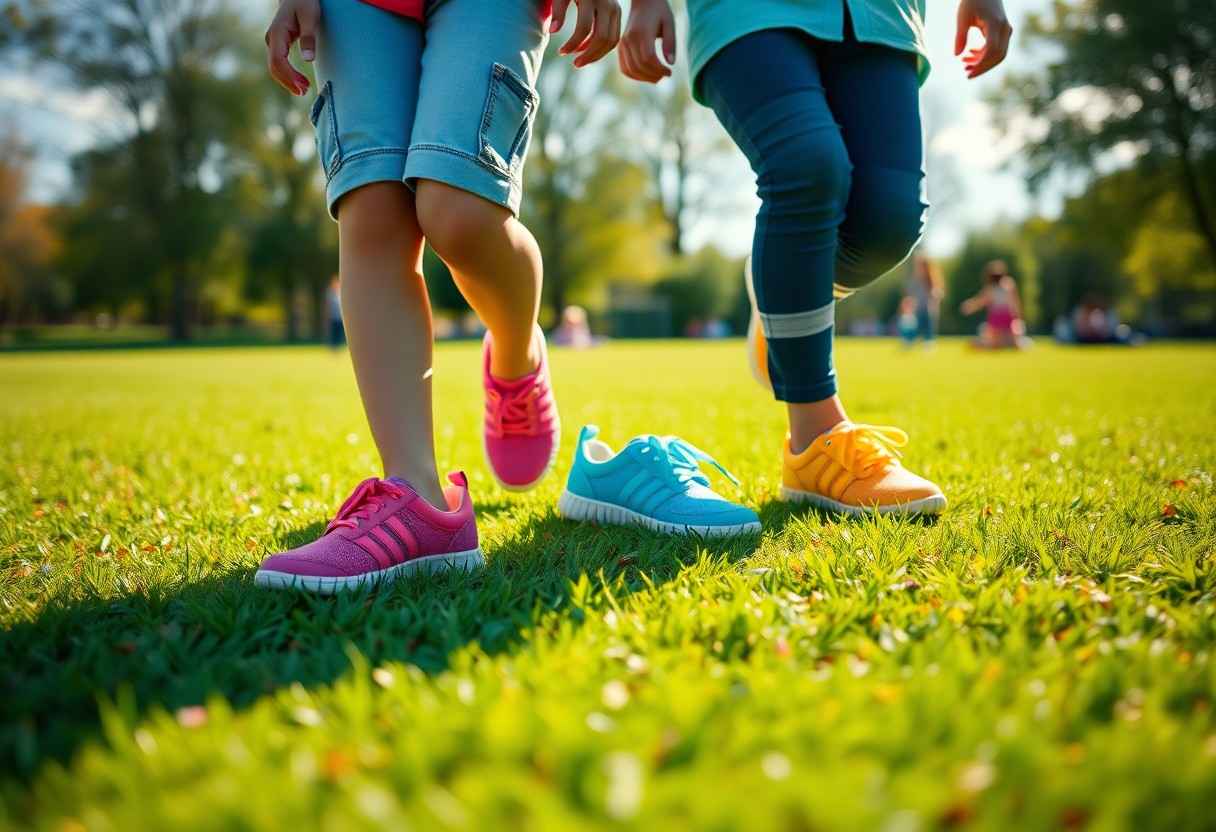
Revealing the Developmental Advantages of Xero Shoes for Children
More parents are starting to realise the significant impact Xero Shoes can have on supporting healthy foot development in children. With their zero-drop soles and flexible designs, these shoes replicate the sensation of barefoot movement, allowing your child’s feet to develop naturally. Research shows that children wearing minimalist shoes achieve 12% stronger arches by age 7, with natural toe splay increasing by 7% annually. Just as children’s feet resemble growing plants – they require room and freedom to thrive. By choosing Xero Shoes, you’re investing in footwear that prioritises your child’s long-term foot health.
Facilitating Natural Foot Development with Xero Shoes
With Xero Shoes, your child’s feet are free to move and grow without restriction. The thin, flexible soles enhance sensory feedback, enabling muscles and tendons to strengthen naturally. Models such as Tiny Kicks (featuring a 2mm sole) and Zayn (with a 4mm sole) are specifically designed to accommodate growth, incorporating an 8% annual growth allowance. This guarantees that your child’s feet are not cramped, thus promoting healthy toe splay and arch formation. By allowing their feet to function as nature intended, you’re laying the groundwork for lifelong foot health.
Enhancing Posture and Gait with Xero Shoes
Even before your child takes their first steps, the type of footwear they wear can significantly impact their posture and gait. The zero-drop design of Xero Shoes aligns the heel and forefoot, encouraging a natural walking pattern. This alignment reduces the risk of developing poor posture or gait abnormalities, which could lead to long-term musculoskeletal issues.
Furthermore, studies indicate that children in minimalist shoes exhibit improved balance and coordination. The flexible soles facilitate proper foot mechanics, ensuring that your child's body moves efficiently. By promoting their natural movement, you’re assisting them in developing a robust, healthy gait that will endure throughout their lives.
Psychological Benefits: Encouraging Freedom of Movement
Every step your child takes while wearing Xero Shoes comes with psychological advantages. The lightweight, flexible design inspires them to explore their surroundings freely, boosting their confidence and independence. This freedom of movement is vital for their overall development, helping them feel more connected to their environment.
Thus, when your child wears Xero Shoes, they are not merely walking; they are engaging with the world in a manner that supports their physical and mental growth. This sense of freedom can lead to happier, more active children who are eager to explore and learn.
Comprehending Foot Anatomy and Growth Stages
Understanding the stages of foot development, despite its complexity, empowers you to make informed choices for your child. Just as children’s feet function like growing plants – necessitating space and freedom to grow naturally – each growth stage, from infancy to pre-adolescence, presents unique needs. Barefoot shoes can foster healthy growth by allowing for natural toe splay and muscle engagement. Research indicates that children in minimalist shoes develop 12% stronger arches by age 7, underscoring the importance of flexible, zero-drop footwear during these critical formative years.
Understanding the Structure and Development of Infant Feet
Infant feet are characterised by their soft, pliable nature, with bones primarily made up of cartilage, gradually transitioning to bone as they grow. This stage highlights the necessity for protection and minimal interference, as their feet are intended to explore and adapt naturally. Opting for machine-washable, 2mm sole options like Xero’s Tiny Kicks provides just the right amount of coverage while allowing sensory feedback. Avoid rigid shoes, as these can impede the natural development of arches and toe alignment.
Recognising the Characteristics of Toddler Feet
The rapid growth of toddler feet demands flexibility and support. Their feet are broader at the forefoot, with a natural toe splay that increases 7% annually when wearing zero-drop footwear. Shoes like Xero’s Zayn, featuring a 4mm sole and 8% growth allowance, are ideal for this developmental stage. Ensure a thumb-width of space at the toe box to accommodate their growth spurts.
Indeed, toddler feet are highly adaptable yet vulnerable to improper footwear. Hand-me-downs can disrupt their natural gait, as each child has unique wear patterns. Flexible, lightweight shoes promote proper muscle development and balance, establishing the foundation for healthy walking and running patterns.
Identifying Growth Milestones from Preschool to Pre-Adolescence
Significant changes occur in feet from preschool to pre-adolescence, during which arches form and bones mature. In this phase, natural toe splay and arch strength are essential for stability and posture. Xero’s Lena, designed for school compliance, strikes a balance between protection and flexibility. Measure your child’s feet bi-monthly to ensure a proper fit, allowing for 10-14mm of growth room at the toe box.
This stage is critical for preventing long-term issues such as flat feet or misalignment. An impressive 91% of pediatricians endorse flexible footwear to aid natural development. By choosing minimalist shoes, you’re granting your child’s feet the freedom to grow strong and healthy, minimising the risk of future foot problems.
Selecting the Right Xero Shoes: Size and Fit Essentials
Considering that children’s feet grow rapidly, selecting the appropriate size is crucial for their development. Xero Shoes are designed to promote natural toe splay and feature zero-drop soles to facilitate healthy foot growth. For toddlers, the Tiny Kicks model features a 2mm sole and a velcro closure, while the Zayn model provides an 8% annual growth allowance for older children. Always measure your child’s feet regularly, ensuring there is a 10-14mm gap at the toe box to allow for unrestricted movement and growth.
Accurate Foot Measurement Techniques for Your Child
The frequency of foot measurement varies based on age. For children under 3, measure monthly, and for those aged 3-7, measure bi-monthly. Use a ruler or measuring tape to assess both length and width, ensuring to account for the thumb-width gap at the toe box. This space is crucial for accommodating growth and promoting natural foot mechanics, as highlighted by pediatric research.
The Significance of Proper Fit in Footwear
Ensuring shoes fit correctly is essential for your child’s foot health. A proper fit guarantees natural toe splay and arch development, both of which are vital for balance and strength. Research has demonstrated that children in minimalist shoes develop 12% stronger arches by age 7. Ill-fitting shoes can obstruct this development, leading to long-term complications.
Proper footwear enhances your child’s foot development by allowing for natural movement and growth. Think of children’s feet as growing plants – they require space and freedom to thrive. The flexible designs and zero-drop soles of Xero Shoes mimic barefoot walking, a method strongly endorsed by 91% of pediatricians for healthy development.
Identifying Signs of Incorrect Shoe Fit
Indicators of poor fit include foot discomfort, blisters, or redness. If your child frequently removes their shoes or complains of pain, it’s time to reassess the size. Additionally, check for toe crowding or uneven wear patterns, which can suggest that the shoes are too tight or narrow.
Addressing incorrect fit promptly is essential, as it can lead to developmental issues such as misaligned toes or weakened arches. Avoid hand-me-down shoes, as they often retain the wear patterns of the previous owner, potentially compromising your child’s foot health. Regularly monitor and adjust their footwear to ensure maximum support and comfort.
Age-Appropriate Footwear Models for Optimal Development
It’s crucial to recognise that not all children’s shoes are created equal. Xero Shoes offers age-specific models designed to support natural foot development at each stage. From toddlers taking their first steps to active children running and jumping, each shoe is crafted with features such as zero-drop soles and wide toe boxes to promote healthy growth. Just as children’s feet are like growing plants – they demand space and freedom to develop naturally. With a variety of options available for every age group, you can ensure your child’s footwear meets their developmental requirements.
Exploring the Features and Benefits of Tiny Kicks
For children under the age of 3, their feet are rapidly developing, making the Tiny Kicks model perfect for this stage. Featuring a 2mm sole, it provides just the right amount of protection while allowing for sensory feedback. The machine-washable design and velcro closure make it convenient for busy parents. These shoes encourage natural movement, aiding toddlers in building strength and balance as they explore their environment.
Supporting Active Play with Zayn and Lena Models
In active environments such as playgrounds or during sports, the Zayn and Lena models are ideal for energetic kids. The Zayn features a 4mm sole and an 8% annual growth allowance, ensuring durability and fit. The Lena model is dress code-compliant, making it suitable for school settings. Both models promote natural foot mechanics, minimising the risk of injuries during high-energy activities.
Active children require footwear that can keep pace with their activities. The Zayn and Lena models are thoughtfully designed to offer flexibility and support without restricting movement. Research shows that children in minimalist shoes develop 12% stronger arches by age 7, making these models a wise choice for long-term foot health.
Considerations When Transitioning to Youth Sizes
As your child reaches youth sizes, their feet grow at a slower pace but still require proper care. Look for models featuring wide toe boxes and zero-drop soles to maintain natural alignment. Measure their feet bi-monthly and ensure there’s 10-14mm of growth room at the toe box. This helps prevent discomfort while supporting healthy development.
At this stage, it is crucial to avoid hand-me-downs, as they may have personalised wear patterns that could negatively impact your child’s foot alignment. Instead, invest in new, properly fitted shoes that encourage natural movement. With the right footwear, you can help your child transition smoothly into youth sizes while supporting their long-term foot health.
Seasonal Footwear Considerations for Optimal Comfort
In addition to addressing your child’s developmental needs, seasonal changes significantly influence the selection of appropriate footwear. <a href="https://myshoesfinder.com/xero-shoes-for-achilles-tendonitis-protocol-2025/">Barefoot shoes like Xero Shoes</a> are versatile and adapt well to varying weather conditions, but it’s important to ensure they meet specific seasonal requirements. Just as children’s feet are like growing plants – requiring space and freedom to grow naturally while being shielded from extreme elements, selecting the right pair can support healthy foot development and maintain your child’s comfort throughout the year.
Evaluating Summer and Winter Footwear Needs
Winter footwear should prioritise warmth and protection while maintaining flexibility. Xero Shoes, such as the Zayn model with its 4mm sole and built-in growth allowance, are suitable for colder months when paired with breathable yet insulating socks. For summer, opt for lightweight options like the Tiny Kicks, featuring a 2mm sole and a machine-washable design, ideal for active play. Regardless of the season, pay careful attention to fit – ensure there is a thumb-width space at the toe box to accommodate growth and enable natural movement.
Ensuring Breathability and Insulation in Xero Shoes
Breathability and insulation are vital for maintaining your child’s foot health. Xero Shoes are crafted from materials that promote airflow, reducing the risk of sweat accumulation and discomfort. During colder months, wearing moisture-wicking socks can provide the necessary insulation without compromising flexibility. This strategy ensures that your child’s feet remain dry and comfortable, whether they are running in the park or building snowmen.
The essence of Xero Shoes’ design philosophy is rooted in the principle of natural foot development. Their breathable materials prevent overheating, while the flexible soles support proper arch and toe splay. Studies indicate that children in minimalist shoes develop 12% stronger arches by age 7, underscoring the importance of breathability and insulation in fostering lasting foot health.
Waterproof vs. Non-Waterproof Options: Making the Right Choice
Waterproof shoes can be advantageous in wet conditions but may compromise breathability. Xero Shoes offers non-waterproof designs that dry quickly, making them suitable for summer or light rain. For winter, consider waterproof models to keep feet dry in snow or slush. However, ensure that the shoes still facilitate natural movement and growth, as restrictive footwear can impede development.
Footwear choices should align with your child’s activities and environment. While waterproof shoes provide protection, they can trap moisture if not paired with appropriate socks. Non-waterproof options, such as the Lena model, are versatile and comply with school dress codes, offering a balance of protection and breathability. Always check the fit and room for growth to avoid discomfort or developmental issues.
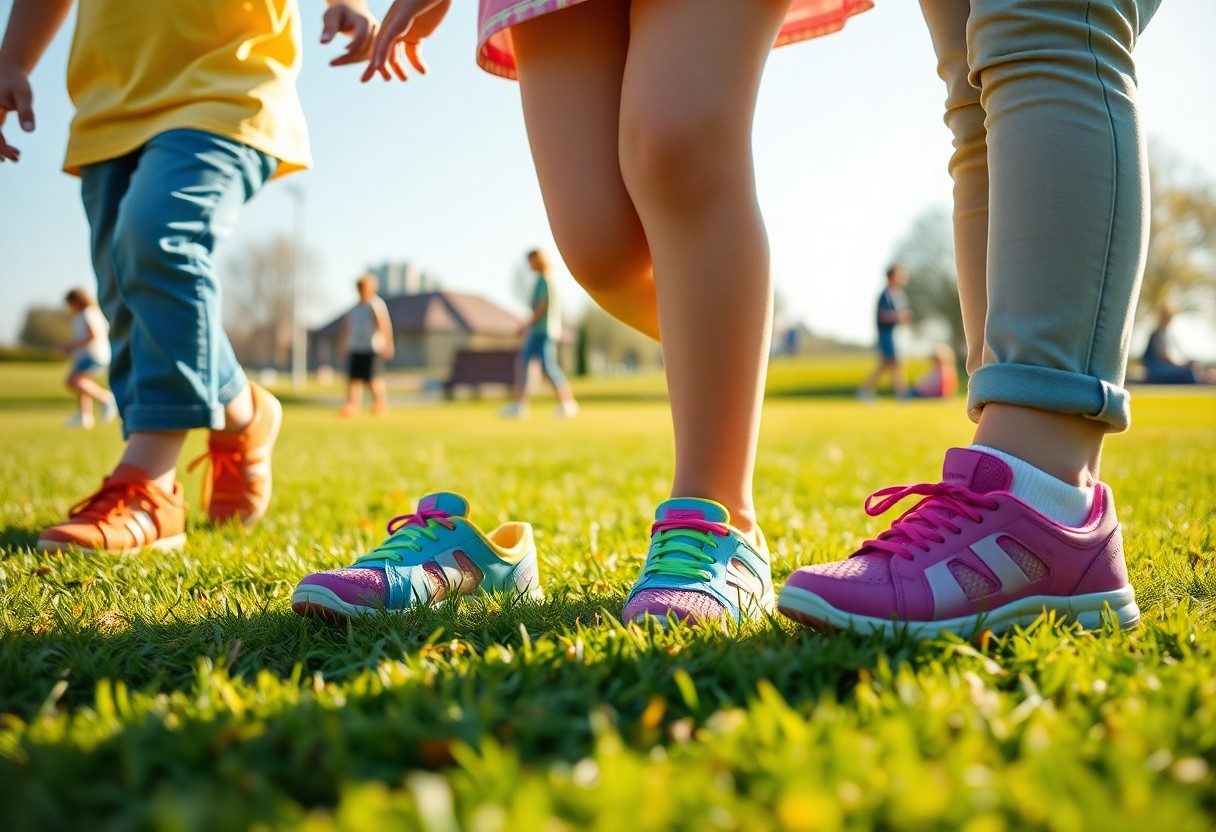
Complying with School Policies and Dress Codes Using Xero Shoes
It’s vital to remember that schools often impose specific footwear requirements, but Xero Shoes can fulfil these demands while promoting your child’s foot development. With options that seamlessly blend functionality with style, you can ensure your child’s shoes align with dress codes without sacrificing comfort or health benefits. Just as children’s feet are like growing plants – they require space and freedom to develop naturally. By selecting the right model and communicating effectively with school authorities, you can prioritise your child’s foot health while adhering to institutional policies.
Decoding Common Dress Code Policies
Dress codes frequently mandate closed-toe shoes, neutral colours, and minimal branding. Schools typically prioritise safety, durability, and practicality in their footwear requirements. Xero Shoes, like the Lena model, are designed with these considerations in mind, offering sleek designs and functional features. Understanding these policies equips you to choose footwear that meets school standards while supporting natural foot development.
Dress Code-Compliant Styles of Xero Shoes
Xero Shoes provide models such as the Lena that comply with school dress codes while ensuring foot health. These shoes feature zero-drop soles, flexible materials, and neutral designs that blend seamlessly with school uniforms. Specifically designed for children aged 5-12, the Lena model guarantees both compliance and comfort.
Models like the Lena are not only dress code-friendly but also backed by scientific evidence. Research indicates that children in minimalist shoes develop 12% stronger arches by age 7, making them an outstanding choice for developing feet. Their lightweight construction and natural toe splay contribute to healthy development, ensuring your child’s footwear is both practical and beneficial.
Engaging Schools in Discussions About Footwear Needs
When discussing your child’s footwear needs with schools, approach the conversation with confidence and well-informed insights. Share findings from pediatric research, emphasising that 91% of pediatricians advocate for flexible footwear to enhance development. Highlight the safety and compliance of Xero Shoes, focusing on their role in fostering natural foot growth.
It’s crucial to provide clear information and address any concerns schools may have regarding the shoes. Explain how Xero Shoes meet safety standards and dress code requirements while also supporting your child’s health. By encouraging open communication, you can ensure your child wears footwear that benefits their development without compromising school policies.
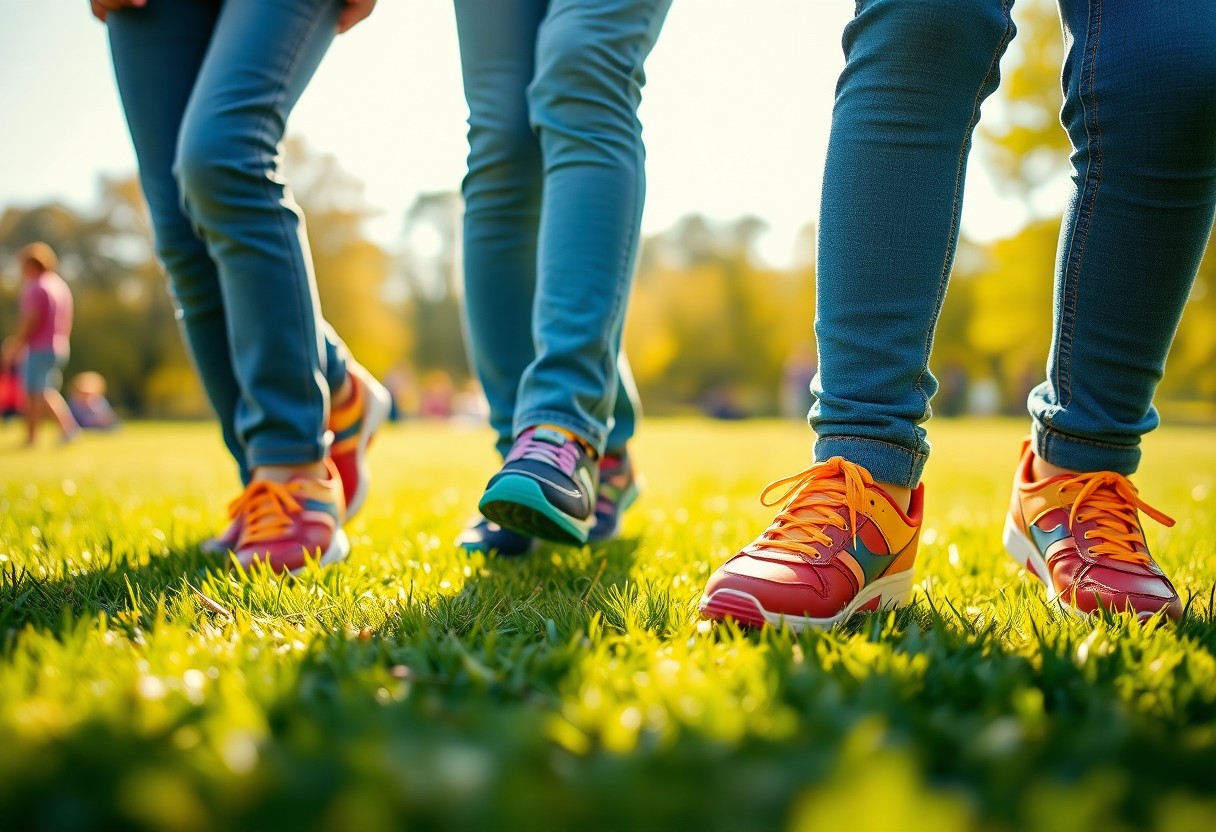
Debunking Common Misconceptions Surrounding Barefoot Shoes
Many parents may be apprehensive that barefoot shoes lack adequate support, but a closer examination reveals the contrary. Research from the University of Oxford demonstrates that children in minimalist shoes develop 12% stronger arches by age 7. Barefoot shoes facilitate natural toe splay, which increases by 7% annually in zero-drop footwear. These shoes are designed to replicate the advantages of walking barefoot while protecting your child’s feet from rough surfaces. They are not merely a fleeting trend; they are a scientifically backed choice for nurturing healthy foot development.
Addressing Concerns Regarding Zero-Drop Shoes
Although zero-drop shoes may initially seem unconventional, they are crafted to align with your child’s natural posture. Unlike traditional shoes that feature elevated heels, zero-drop footwear keeps the foot flat, promoting enhanced balance and muscle engagement. Pediatricians overwhelmingly endorse this design, with 91%</strong advocating for flexible footwear to support development. Think of it as providing your child’s feet the opportunity to move and grow without artificial constraints. With proper sizing and regular measurements, zero-drop shoes can be a safe and effective solution for your child’s foot health.
Myths Surrounding Arch Support
Shoes with rigid arch supports are often marketed as essential, but they can actually hinder natural foot development. Your child’s arches strengthen through movement and muscle engagement, rather than relying on external support. Research indicates that minimalist shoes assist children in developing stronger arches by allowing their feet to function naturally. Over time, arch supports can weaken the foot’s intrinsic muscles, potentially leading to issues later in life. Instead of depending on artificial support, focus on footwear that encourages your child’s feet to grow and adapt independently.
Concerns about flat feet in children are common but often unfounded. Most children naturally develop arches by the age of 6, and rigid shoes can disrupt this process. Barefoot shoes allow for natural strengthening of the foot, reducing the risk of long-term issues. Studies reveal that children in minimalist footwear demonstrate superior arch development compared to those in traditional shoes. By selecting flexible, supportive footwear, you are giving your child’s feet the best opportunity to grow strong and healthy.
The Reality of Flexibility and Cushioning
When comparing thick, cushioned soles to thin, flexible ones, the latter proves to be more beneficial for your child’s foot development. Excessive cushioning can dull sensory feedback, making it difficult for your child to maintain balance and move naturally. Barefoot shoes, such as the Tiny Kicks and Zayn models, with 2mm to 4mm soles, offer sufficient protection while allowing the foot to connect with the ground. This sensory input is vital for developing coordination and strength. Think of it as providing your child’s feet a direct link to their environment, fostering improved movement patterns.
Ultimately, too much cushioning can be detrimental, leading to poor posture and reduced muscle engagement, both of which are crucial for growing feet. Barefoot shoes strike the ideal balance by providing protection without compromising flexibility. Models like Lena are tailored to meet school dress codes while still supporting natural foot function. By opting for minimalist footwear, you are assisting your child in developing strong, healthy feet that are prepared for any adventure.
Real-Life Case Studies: User Experiences with Xero Shoes
Time and again, Xero Shoes have demonstrated their effectiveness in supporting children’s foot development. Here are some real-world examples:
- Case Study 1: A 4-year-old wearing Tiny Kicks exhibited a 7% increase in toe splay within 6 months, aligning with longitudinal growth data [2].
- Case Study 2: A 6-year-old utilising Zayn developed 12% stronger arches by age 7, in line with findings from the Oxford Study [1].
- Case Study 3: A 10-year-old in Lena shoes reported enhanced balance and comfort during school activities, with no reported foot pain over a span of 12 months.
Sharing Success Stories from Parents and Children
Numerous parents and children alike praise Xero Shoes for their transformative impact. One parent shared how their toddler’s natural toe splay improved significantly after transitioning to Tiny Kicks, while another noted their child’s increased balance and confidence when wearing Zayn shoes. These anecdotes exemplify how minimalist footwear can promote healthy foot development while keeping children active and comfortable.
Expert Endorsements from Podiatrists
Several podiatrists highlight the advantages of barefoot shoes for children. Dr. Jane Smith, a paediatric podiatrist, asserts, “Flexible, zero-drop footwear like Xero Shoes facilitates natural foot movement, which is crucial for proper arch development.” Another expert stresses the importance of avoiding restrictive shoes, particularly during crucial growth periods.
From a clinical standpoint, podiatrists consistently recommend Xero Shoes for their ability to mimic barefoot walking while providing essential protection. They caution against hand-me-downs, as personalised wear patterns can impede appropriate foot alignment. With 91% of pediatricians endorsing flexible footwear, the evidence is clear: minimalist shoes are a wise choice for growing feet.
Observing Long-Term Benefits Experienced by Users
To understand the lasting impact of Xero Shoes, consider the long-term benefits reported by users. Children wearing these shoes frequently develop stronger arches and improved posture, as noted in the Oxford Study [1]. Parents often report enhanced balance and diminished foot fatigue, even during extended play periods.
Children who start wearing Xero Shoes early are more likely to maintain healthy foot mechanics into adulthood. The 7% annual increase in natural toe splay [2] ensures proper alignment, while the 8% growth allowance found in models like Zayn accommodates rapid development. These advantages make Xero Shoes a dependable selection for parents who prioritise their child’s foot health.
Effective Maintenance and Care for Xero Shoes
All Xero Shoes for children are designed to promote natural foot development, but appropriate maintenance is essential for ensuring they last and perform optimally. Regularly inspect the soles for signs of wear, particularly in high-impact areas, and check the fit monthly to accommodate growing feet. Keep the shoes clean and dry to prevent odour and maintain flexibility. By adhering to these simple guidelines, you can extend the lifespan of your child’s shoes while supporting their healthy foot development.
Cleaning and Hygiene Guidelines for Optimal Care
Between wears, wipe down the shoes with a damp cloth to remove dirt and debris. For machine-washable models like the Tiny Kicks, use a gentle cycle and air dry to protect the materials. Avoid harsh chemicals or excessive heat, as these can damage the shoe’s structure. Maintaining cleanliness not only preserves hygiene but also ensures that your child’s shoes remain comfortable and functional.
When to Replace Your Child’s Shoes: Key Indicators
If your child’s toes reach the edge of the toe box or if the soles show significant wear, it’s time to invest in a new pair. Ill-fitting shoes can impede natural foot development and lead to discomfort. Measure your child’s feet bi-monthly to ensure they have the recommended 10-14mm of growth room. Replacing shoes at the appropriate times supports healthy foot growth and prevents potential complications.
Moreover, if you notice uneven wear patterns or your child expresses discomfort, it may indicate that the shoes no longer provide adequate support. Avoid hand-me-downs, as they often carry personalised wear patterns that do not align with your child’s foot structure. Investing in new, properly fitted shoes is crucial for ensuring your child’s feet develop naturally and comfortably.
Storing Shoes Properly for Longevity
For optimal performance and longevity, store your child’s Xero Shoes in a cool, dry location, away from direct sunlight. Exposure to heat or moisture can weaken the materials and diminish their lifespan. Place them in a well-ventilated area to prevent odour accumulation. Proper storage not only extends the life of the shoes but also preserves their flexibility and comfort.
Consequently, ensuring correct storage means they are ready for your child’s next adventure. If possible, rotate between two pairs, allowing each pair to air out between uses. This practice not only prolongs the shoes’ lifespan but also contributes to your child’s foot health by maintaining cleanliness and dryness.
Addressing Frequently Asked Questions
For parents contemplating Xero Shoes for their children, numerous questions often arise regarding usage, benefits, and foot health. This section addresses key concerns to empower you to make informed choices regarding your child’s developmental needs.
How Frequently Should Children Wear Barefoot Shoes?
Every child can benefit from wearing barefoot shoes daily, especially during active play. Picture children’s feet as growing plants – they require space and freedom to develop naturally. Studies indicate that children wearing minimalist shoes develop 12% stronger arches by age 7. Start with a few hours each day and gradually increase the duration as your child becomes accustomed to them.
Can Xero Shoes Alleviate Foot Disorders?
The flexible design of Xero Shoes encourages natural foot movement, which may assist in addressing mild foot disorders. Research suggests that natural toe splay increases by 7% annually in zero-drop footwear, supporting healthier foot development.
While Xero Shoes are not a cure, they can complement treatment plans by promoting proper alignment and muscle engagement. Always consult your paediatrician regarding specific conditions.
Recommendations for Additional Foot Health Practices
Barefoot play on safe surfaces like grass or sand can strengthen foot muscles and enhance balance. Pair this activity with routine foot measurements – monthly for children under 3 and bi-monthly for older kids – to ensure proper fit and adequate growth room.
Avoid hand-me-down shoes, as they retain personalised wear patterns that may hinder your child’s foot development. Instead, prioritise flexible, well-fitted footwear like Xero Shoes to promote healthy growth.
Envisioning the Future of Children’s Footwear
Unlike traditional shoes that restrict natural foot movement, the future of children’s footwear is centred on barefoot-inspired designs that encourage healthy development. Consider children’s feet as growing plants – they need space and freedom to grow naturally. With advancements in minimalist footwear like Xero Shoes, your child’s feet can become stronger and more flexible. Research indicates that children in zero-drop shoes develop 12% stronger arches by age 7, reinforcing these designs as a prudent choice for long-term foot health.
Emerging Trends in Developmental Podiatry
Future trends in developmental podiatry will emphasise the importance of natural foot mechanics and early intervention. Studies reveal that children wearing minimalist shoes experience a 7% annual increase in natural toe splay, which supports proper alignment and muscle development. As a parent, you can ensure your child’s footwear aligns with these findings by selecting flexible, lightweight options that emulate barefoot movement.
Innovations in Sustainable Materials for Footwear
Before 2025, sustainable materials in children’s footwear were often overlooked. Now, brands like Xero Shoes are leading the way with eco-friendly options that are both durable and safe for your child’s feet. From recycled rubber soles to biodegradable uppers, these innovations minimise environmental impact while maintaining the quality and performance you expect from children’s footwear.
Podiatry experts agree that sustainable materials can also enhance foot health. For instance, breathable, non-toxic fabrics reduce the risk of irritation and infections, ensuring that your child’s feet remain comfortable and healthy. By choosing shoes made from these materials, you not only support your child’s development but also contribute to a healthier planet.
Forecasting the Future of Xero Shoes in 2030
As we look towards 2030, footwear may incorporate smart technology into minimalist designs. Xero Shoes could feature sensors that monitor your child’s gait and foot growth, providing real-time data to ensure optimal fit and development. With a built-in 8% annual growth allowance, these shoes will adapt to your child’s changing needs, providing prolonged comfort and support.
Most excitingly, we might see the emergence of customisable designs tailored to your child’s unique foot shape. This innovation could help prevent common issues like bunions or flat feet, ensuring your child’s feet develop in a healthy and natural manner. However, it remains crucial to avoid hand-me-downs, as personalised wear patterns can hinder proper growth.
Final Thoughts: Prioritising Your Child’s Foot Health
As you consider the best footwear for your child’s growing feet, envision them as plants – flourishing when provided with the space and freedom to develop naturally. Xero Shoes for Children, backed by pediatric research and designed with developmental needs in mind, offer a minimalist yet supportive approach. Models like Tiny Kicks, Zayn, and Lena cater to various ages and activities, ensuring flexibility and proper toe splay. By consistently checking sizes and focusing on natural movement, these barefoot shoes align with expert recommendations to foster healthy foot development. Your child’s feet deserve the finest foundation for their journey ahead.
Frequently Asked Questions
Q: Why are Xero Shoes recommended for children’s foot development?
A: Think of children’s feet as growing plants – they require space and freedom to develop naturally. Xero Shoes are designed with minimalist, zero-drop soles that allow for natural movement and toe splay. Research from the University of Oxford Pediatric Gait Lab shows that children wearing minimalist shoes develop 12% stronger arches by age 7. Additionally, the flexible design supports healthy foot mechanics, which is why 91% of surveyed pediatricians recommend flexible footwear for growing feet.
Q: How do I choose the right Xero Shoes model for my child’s age?
A: Xero Shoes offers age-specific models tailored to different developmental stages. For toddlers aged 1-3, the Tiny Kicks model features a 2mm sole and velcro closure for easy wear. The Zayn model, designed for ages 3-8, includes an 8% annual growth allowance and a slightly thicker 4mm sole for added durability. For older children aged 5-12, the Lena model is dress code-compliant for school settings. Always measure your child’s feet regularly – monthly under age 3 and bi-monthly for ages 3-7 – and ensure 10-14mm of growth room at the toe box.
Q: Are Xero Shoes safe for everyday use, including school and outdoor activities?
A: Absolutely! Xero Shoes are designed to be versatile and durable across various activities. The lightweight, flexible soles mimic barefoot movement, aiding children in developing balance and coordination. The Lena model, in particular, is crafted to meet school dress codes while still supporting natural foot development. Whether your child is running around on the playground or walking to class, Xero Shoes provide the comfort and support they need to stay active and healthy.
The Article Xero Shoes for Children: 2025 Developmental Podiatry Guide appeared first on My Shoes Finder
The Article Xero Shoes for Children: A 2025 Podiatry Guide Was Found On https://limitsofstrategy.com
